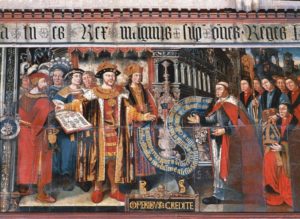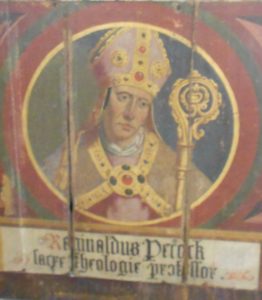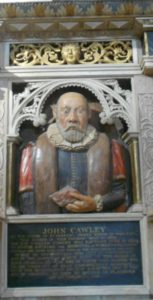‘The Culture of Early Modern Sussex’, a HEIF-funded project, intends to challenge assumptions about the county, demonstrating both the strangeness of Sussex and its importance in the period 1500 – 1700. Through a series of public events in the Spring and early Summer of 2015 – including two exhibitions, a number of public lectures, and a website – ‘The Culture of Early Modern Sussex’ will ask the general public to forget the modern counties of East and West Sussex while introducing them to an unfamiliar place. The project is assembled around five key themes: Religious change; the county economy; society and governance; Sussex as point of entry and exit; Strange tales and literary Sussex. These features reveal a Tudor and Jacobean Sussex which was home to heavy industry and a point of entry for religious refugees and for those seeking to fundamentally alter England’s religion and governance; it was an area split between a Reformed east and a western half which remained doctrinally loyal to Rome for a considerable period of time; it was a county which was home to a number of important families but which, in spite of its proximity to London, appeared to be isolated from the centre of power, cut-off by a notoriously bad road system and by the influence of a network of Roman Catholic families who maintained power in the county until late into the reign of Elizabeth I and whose activities – imagined or otherwise – prompted suspicion on the part of the government.

Although some of these factors have contemporary echoes – many of the proposed ‘Fracking’ sites are located in areas associated with the iron industry, and economic complaints about refugees from violent foreign conflicts match attempted anti-alien legislation in Rye in the 1570s – there is a general lack of awareness about the early modern history of Sussex. The project intends to provide a historical context to current events and to highlight features early modern Sussex which may surprise or may cause people to reconsider what they know about the county. In so doing, ‘The Culture of Early Modern Sussex’ will address sectarian constructions of the county formulated in the 19th and early 20th centuries. The religious make-up of the county was more complicated than many historians suggest, with a number of types of Protestantism in the east and a range of Roman Catholics concentrated in the west; some, like the Brownes, were noted Catholic loyalist but several county Catholics were involved in a number of plots directed against Elizabeth I. Moreover, Battle Abbey – the Brownes’ home in the ‘Protestant’ east – became a major recusant site in the 17th century.
The larger exhibition, with two accompanying public lectures, will take place at Chichester Cathedral. The Cathedral, with its many medieval and early modern architectural features, including the restored paneling by Lambert Barnard, will be the key exhibit. Through the Cathedral it is possible to relate the story of the long Reformation in Sussex. A sequence of loyal but essentially conservative Bishops – Sherborne (1508 – 36), Sampson (1536 – 43), Day (1543 – 51, 53 – 6) – did not appear to enforce doctrinal orthodoxy throughout the See. A case can be made for the Reformation as a religious phenomenon only arriving in Sussex with Bishop Richard Curteys (1570 – 82). In the west Curteys’ reforms were hampered by the five families who remained doctrinally Catholic and who dominated county politics until the 1580s; in the east he faced often more radical forms of Protestantism which had developed through the eastern coastal towns’ interaction with European Protestantism and the survival of earlier forms of Protestantism in the Wealden area. In the 17th century, Chichester was home to a number of ‘Arminian’ Bishops, including Andrews (1605 – 9), Harsnett (1609 – 19), Montagu (1628 – 38), Duppa (1638 – 41) and Henry King (1642 – 6, 60 – 9). The remains of King’s library which was dismantled during the Civil War will provide a number of exhibits, including samples of King’s own work, and a manuscript left by John Donne to his friend Henry King.
The second exhibition will take place at Hasting Museum and Art Gallery and will focus upon Sussex as point of entry, trade and smuggling, and the iron industry. The latter is an important feature of early modern Sussex and features in a diverse number of texts, including Drayton’s Polyolbion, economic complaints, proto-environmental discourse and theological debate. A consideration of the use of the iron industry, and its attendant impact on the county environment, will feature in the Literary Sussex section of the exhibition.
Paul Quinn


Left: Reginald Pecock, Bishop of Chichester (1450 – 9). The politically motivated accusation of heresy made against Pecock is a precursor to the frequent problems experienced by his 16th and 17th century successors. Right: John Cawley’s Monument.
Images reproduced with kind permission of Chichester Cathedral.
